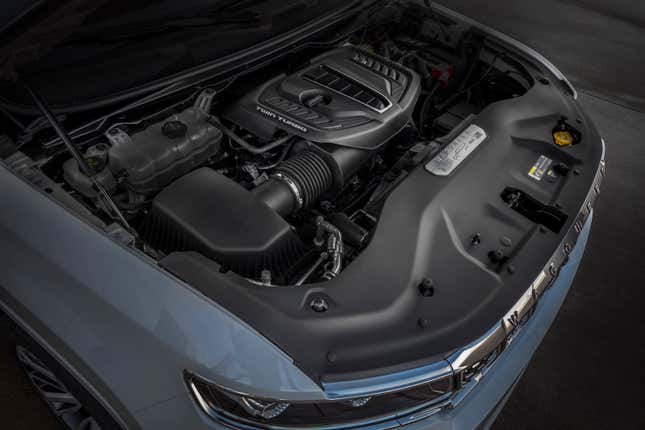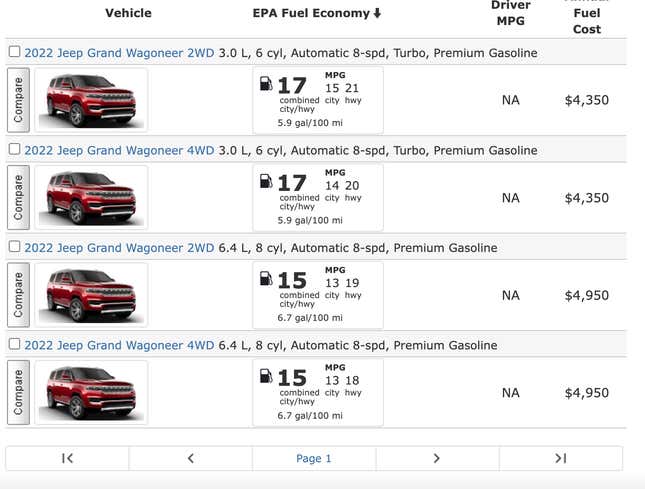Did we travel back in time to the 2000s? There’s the all-new Hummer that’s a rolling symbol of American excess. Cadillac is making the Escalade bigger and faster with the V-series. Meanwhile, Jeep has decided it wants in on the extra-large, extra-luxury SUV market. While the new Wagoneer and Grand Wagoneer were released with the 6.4-liter V8, for 2023 the top of the Jeep line gets the all-new Hurricane, a twin-turbo straight-six engine that’s meant to improve the efficiency of the big-body trucks.

The EPA just released figures for the standard-length Grand Wagoneer equipped with the 3.0-liter turbo six with 2WD: 15 mpg city/21 highway/17 combined. Those figures make it the most efficient Grand Wagoneer you can buy.
Compare that to the same 2WD standard-length Grand Wagoneer powered by the 6.4-liter V8. That vehicle gets 13 mpg city /19 highway /15 combined, despite the fact that the 471-hp, 455 lb-ft V8 makes less power than the 510-hp, 500 lb-ft six-cylinder.
These numbers get worse when you choose the long-wheelbase Grand Wagoneer L. With the 510-hp Hurricane engine, you can expect 14 mpg city/19 highway/16 combined in your extra-long 2WD Grand Wagoneer, according to Jeep’s estimates (which could differ from the EPA numbers). Jeep plans to offer a lower-power Hurricane engine in the 2WD Grand Wagoneer L, making 420 hp and offering 17 mpg city/23 highway/19 combined.
If you’re wondering how four-wheel drive will affect your Grand Wagoneer’s mileage, it almost doesn’t make a difference. You lose one mpg each in city and highway figures if you pair a four-wheel-drive system with the I6. So it looks like any way you configure your Grand Wagoneer, you’ll be paying for it at the pump. The EPA estimates annual fuel costs at $4,350 for a six-cylinder Grand Wagoneer, whether it’s 2WD or 4WD.

As of this writing, the average price of gas nationally is $4.32 — up 13 cents from a week prior. The new Hurricane engine is a $2,000 option on any Grand Wagoneer model.
